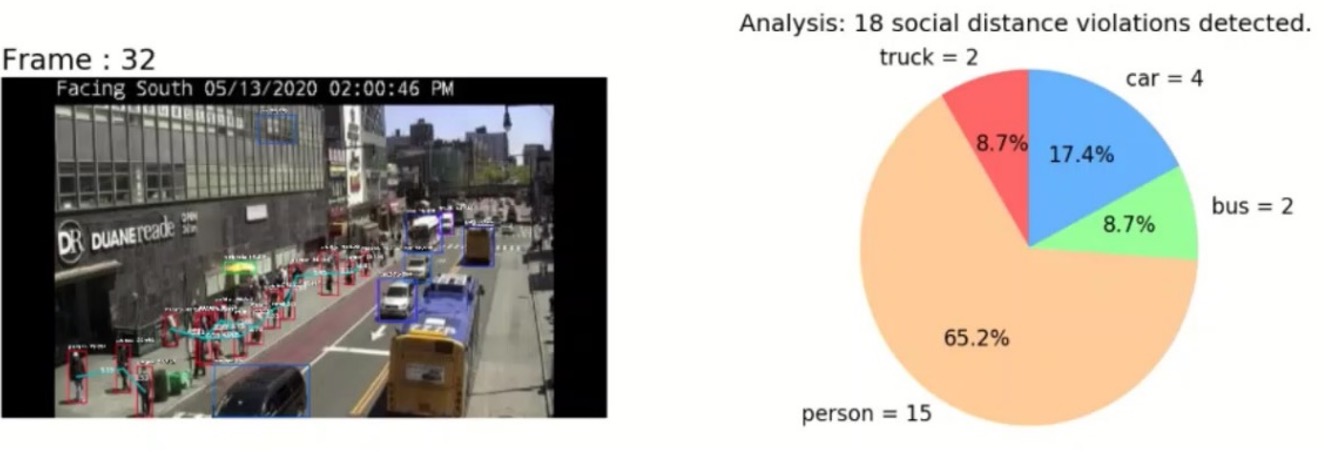Smart City Solutions to Engage Multiple Stakeholders During a Pandemic
Written by Larissa Paredes Muse1
The COVID-19 pandemic forced governments and city managers worldwide to find new ways to responsibly manage municipalities to contain the spread of the Sars-Cov-2 virus. The complexity of this unexpected urban emergency required well-coordinated actions based on reliable data. In turn, this required innovative approaches to engage different segments of society and mobilize their teams, distributed in various sectors, which constitute the municipal administration.
This article aims to share some experiences on how cities and municipalities’ authorities used smart city solutions to engage multiple stakeholders during a pandemic. For that, three specialists from different parts of the globe and various areas of expertise were interviewed. Kaan Ozbay [1], Jeff Schlegelmilch [2], and Mirjam Kretzschmar [3] shared their expertise in urban management and health emergencies to discuss their points of view about the challenges that city managers faced during the pandemic and how to integrate actions using ICT technologies.
Data to Deal with Uncertainty
The uncertainty of the COVID-19 pandemic called for fast and data-driven measures. In the face of this crisis, multiple agencies adopted smart city solutions to better act and communicate among themselves, as well as to communicate the most accurate information to the population. These solutions are heavily dependent on Information and Communication Technologies (ICTs) and help to connect the authorities with different sectors of society and facilitate the decision-making process among public agencies through collaborative governance methods, citizen participation practices, and stakeholder engagement tools.
Prof. Ozbay worked on simulations of New York City transportation systems [3] to understand the effects of lesser demand, using the existing publicly available feeds from the NY DOT cameras to monitor pedestrian behavior and crowd density with minimum infrastructure investment. The researchers evaluated social distancing patterns and pedestrian proximity with a high precision rate through deep neural networks and other image processing techniques. According to the specialist, anonymity is offered as the camera’s images are of low resolution (Fig. 1).

Fig 1. Crowd density during COVID-19 (Apr-May 2020) in: Showcase of the C2SMART COVID-19 Data Dashboard – Sociability. Source: https://c2smart.engineering.nyu.edu/covid19-data-dashboard-sociability#detection-showcase
With the data organized in dashboards, centralized in one place (Fig. 2), authorities and researchers can understand the effect of COVID-19 in mobility [4], including the policy lag, which is the effect of policies on the transportation system. Using Machine Learning techniques, Prof. Ozbay and the C2Smart team could determine for how long a stay-at-home order remains effective by observing the transportation systems. According to Prof. Ozbay, that could also reveal how people react to those rules.

Fig 2. C2SMART COVID-19 Data Dashboard – Mobility. Source: https://c2smart.engineering.nyu.edu/wp-content/uploads/2020/09/C2SMART-COVID-19-Whitepaper-Issue5.pdf
Data analysis, Mathematical Models and Contact Tracing
Data analysis, predictive models, and dashboards for data visualization are essential tools to aid authorities in decision-making. In addition, with contact tracing techniques, it is possible to improve authorities’ response during pandemics like COVID-19.
According to Prof. Kretzschmar, data analysis and mathematical models can give insights into what can be expected in the future, including forecasts of the possible impacts of interventions. In addition, these methods can provide indicators to detect how effective the measures are and the current state of the situation. During the pandemic, dashboards can quickly visualize the policies, such as social distancing. This information helps policymakers to support their decisions. Concerning contact tracing, Prof. Kretzschmar affirms that with COVID-19 and other infectious diseases with high transmission rates, contact tracing strategies need to be fast to be effective, as described in [5].
Stakeholder Engagement Strategies and Challenges
Smart City solutions are more than the use of technology itself. They also include new ways to integrate the decision-making and governance processes. Among these solutions, the operation centers and management facilities played an important role in improving the communication between authorities and society during the COVID-19 pandemic.
According to Jeff Schlegelmilch, author of [6-9], these centers are created initially and are subsequently optimized around agencies, utilities, and government agencies. However, the specialist recognizes that the operation centers have limitations and blind spots and affirms that it is vital to have community integration. Also, Mr. Schlegelmilch points out that different city actors have distinct information requirements and the decisions they need to support.
Mr. Schlegelmilch stresses the importance of having community leaders involved in the decisions and actions to engage society better. According to the specialist, technicians and engineers cannot possibly have all of their knowledge based on their own experience to capture the experience of those who have grown up in very different conditions and in very different environments than them. Also, the values of the society in each place should be considered.
To respond to the obsolescence of knowledge in technology and practice of the public agencies, Prof. Ozbay defends the importance of those agencies and cities to establish a long-term relationship with universities, where they can bring their knowledge as in-house advisors. They would serve as a neutral source of information about cutting-edge technologies and be capable of filling the knowledge gap in those agencies. The universities should act as trusted entities, being company and technology agnostic, to assist the cities in evaluating the solutions presented to them. But the universities must be focused on applied science with real-world experience.
Regarding the complexity of the information that the political actors and society receives, especially in the context of disbelief in science, Prof. Kretzschmar affirms that scientists should communicate the facts and data with clarity.
Conclusion
The Smart City solutions are helpful to engage society and decision-makers in order to accelerate the response to emergencies. However, it is essential to redesign the governance structures, rethink scales and representation methods to be inclusive and equitable, as well as find ways to communicate effectively. Similarly, community participation in the decision-making processes and fostering local leaderships are equally valuable to validate the information gathered. Finally, and most importantly, it is critical to build up society’s trust in the information given, especially in times of uncertainty.
Footnotes
1 Volunteer Researcher at Federal University of Rio de Janeiro, Brazil; IEEE Smart Cities Marketing Committee Chair.
2 Professor of Civil & Urban Engineering & CUSP at New York University, and Director of the Connected Cities for Smart Mobility towards Accessible & Resilient Transportation (C2SMART), a Tier 1 University Transportation Center funded by USDOT.
3 Director at National Center for Disaster Preparedness, Earth Institute, Columbia University. Expert in disaster preparedness, specializing in public health preparedness and community resilience.
4 Professor of Dynamics of Infectious Diseases at University of Utrecht and Expert in Mathematical Disease Modelling.
References
- Kaan Ozbay, “Interview by Larissa Paredes Muse,” 19 May 2021, https://youtu.be/IJl_NATwDNg
- Jeff Schlegelmilch, “Interview by Larissa Paredes Muse,” 19 May 2021, https://youtu.be/kNlQawUStS0
- Z. Bian, F. Zuo, J. Gao, Y. Chen, S. S. C. P. Venkata, S. D. Bernardes, K. Ozbay, X. J. Ban, J. Wang, “Time lag effects of COVID-19 policies on transportation systems: A comparative study of New York City and Seattle,” Transportation Research Part A: Policy and Practice, vol. 145, pp.269-283, Mar. 2021. DOI: https://doi.org/10.1016/j.tra.2021.01.019
- F. Zuo, J. Wang, J. Gao, K. Ozbay, X. J. Ban, Y. Shen, H. Yang, S. Iyer, “An Interactive Data Visualization and Analytics Tool to Evaluate Mobility and Sociability Trends During COVID-19,” UrbComp 2020: The 9th SIGKDD International Workshop on Urban Computing, San Diego, California, USA, Aug. 24, 2020. [Online]. Available: https://arxiv.org/pdf/2006.14882.pdf
- M. E. Kretzschmar, G. Rozhnova, M. C. J. Bootsma, M. van Boven, J. H. H. M. van de Wijgert, M. J. M. Bonten. “Impact of delays on effectiveness of contact tracing strategies for COVID-19: a modelling study,” Lancet Public Health 2020, Vol. 5, Issue 8, pp. E452-E459, July 2020. DOI: https://doi.org/10.1016/S2468-2667(20)30157-2
- J. Schlegelmilch, Rethinking Readiness: A Brief Guide to Twenty-First-Century Megadisasters. New York, NY, USA: Columbia University Press, 2020.
- J. Schlegelmilch and C. Douglas, “Initial Coronavirus Disease–2019 Closure Strategies Adopted by a Convenience Sample of US School Districts: Directions for Future Research.” Disaster Medicine and Public Health Preparedness, vol. 14, Issue 3, pp. e17 - e18, June 2020. DOI: https://doi.org/10.1017/dmp.2020.147
- Z. White, J. Schlegelmilch, J. Ratner, G. Saxena, K. Wongsodirdjo, S. Aguilar, D. Kushner, J. Ortega, A. Paaso and S. Bahramirad, “Current Data Gaps in Modeling Essential Worker Absenteeism Due to COVID-19. Disaster Medicine and Public Health Preparedness, pp.1-2. DOI: https://doi.org/10.1017/dmp.2020.353
- J. Schlegelmilch, A. Paaso, J. Ratner, G. Saxena, Z. White, S. Aguilar, D. Kushner, N. Matevosyan, J. Ortega and S. Bahramirad, “Using analytics to support a utility’s initial response to the COVID-19 pandemic amid an uncertain evidence base,” Journal of Business Continuity & Emergency Planning, Vol.14, nº 3 - Special Issue: COVID-19, pp. 226–238. DOI: https://doi.org/10.7916/d8-496g-1k61
This article edited by Bernard Fong
For a downloadable copy of the May 2021 eNewsletter which includes this article, please visit the IEEE Smart Cities Resource Center.

To have the eNewsletter delivered monthly to your inbox, join the IEEE Smart Cities Community.
Past Issues
To view archived articles, and issues, which deliver rich insight into the forces shaping the future of the smart cities. Older eNewsletter can be found here. To download full issues, visit the publications section of the IEEE Smart Cities Resource Center.



